Bomber and missile-carrying aircraft of the Chinese fleet
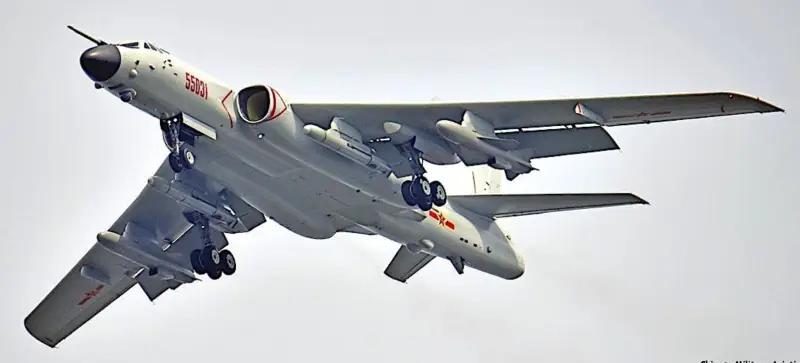
Just 15 years ago, the Chinese maritime aviation was mainly equipped with attack aircraft of older types. In service were early modifications of the N-6 long-range bomber (a copy of the Tu-16), which, in addition to free-falling bombs, torpedoes and sea mines, could carry very large subsonic anti-ship missiles.
Very numerous in naval aviation were the obsolete N-5 bombers and torpedo bombers (a copy of the Il-28), as well as the Q-5 jet attack aircraft (designed on the basis of the J-6 fighter, which is a clone of the MiG-19). Also in the PLA Navy aviation there were approximately two dozen new JH-7 bombers, which had in their arsenal modern anti-ship missiles created on the basis of Western models.
In parallel with the quantitative and qualitative strengthening of surface and underwater fleet In the PRC, naval strike aircraft were improved. Modernized versions of the N-6 missile carriers, equipped with new economical engines and modern missiles, have entered service. The rare H-5 bombers and Q-5 attack aircraft have retired. Chinese admirals entrusted counteraction to enemy fleets and support for landing operations in the near zone to the modernized JH-7A front-line bombers.
Anti-ship missiles are also included in the armament of the J-10, J-11, J-15 and Su-30MK2 fighters, but fighters will be discussed in the next part of the series, dedicated to Chinese naval aviation.
Currently, missile-carrying aircraft of the PLA Navy are one of the most important means of combating enemy warships. Naval aviation carriers account for about 30% of the anti-ship missiles available in the fleet. Chinese naval aviation has the ability to rely on a developed airfield network; about half of the paved runways are located along the coast at a depth of up to 700 km from the coastline.
Long-range bombers and missile carriers N-6
At the end of the 1950s, despite the deterioration of relations between the countries, the Soviet Union handed over to China a package of documentation for the serial construction of the Tu-16, the latest long-range bomber for that time. As part of an intergovernmental agreement, Beijing ordered 20 finished aircraft, but until June 1960, when Soviet specialists stopped supporting this project and cooperation in this area was stopped, the PRC received two standard bombers and seven disassembled aircraft.
In September 1959, the first Chinese-made long-range bomber was tested in the air. In the PLA Air Force, the Soviet Tu-16 received the designation Hōng-6 (N-6).

Serial construction of the H-6 was carried out at an enterprise in the city of Xi'an, which is now part of the aircraft manufacturing corporation Xi'an Aircraft Company (XAC).
The Chinese aviation industry was able to produce fuselage parts, but big problems arose with mastering the production of AM-3 turbojet engines, complex components, assemblies and electronic equipment. It was not until 1969 that a bomber made entirely of Chinese parts, designated the H-6A, entered mass production. But due to economic and technological difficulties at the initial stage of production, production of the N-6A was carried out at a very low rate. As of 1974, there were 32 N-6 bombers (assembled from Soviet components) and N-6A bombers in service.
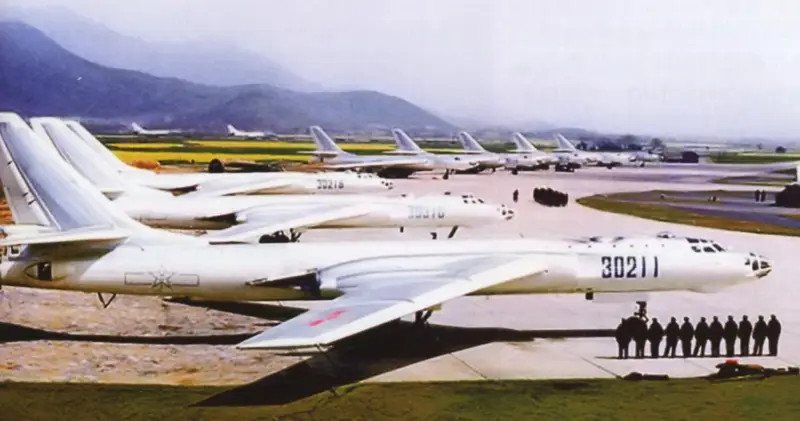
In the 1970s, the Chinese aviation industry was in decline, and few aircraft of the H-6 family were built, and a significant part of the bombers available to the troops were faulty. After overcoming the consequences of the Cultural Revolution, by 1986, through heroic efforts, about 140 long-range bombers, reconnaissance and electronic warfare aircraft were put into operation.
Bombers of the H-6 family are still an important part of the Chinese nuclear triad and serve in naval aviation. And although in Russia the Tu-16 was taken out of service more than 30 years ago, the production of the latest versions of the N-6 continued until recently, and modernization is still underway.
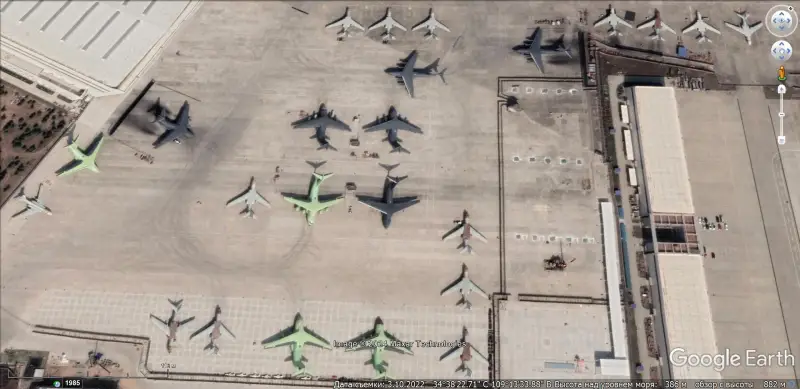
Google Earth satellite image: H-6 and Y-20 aircraft at the finished product site of the XAS plant in Xi'an
Regular use of N-6B long-range reconnaissance aircraft in the interests of the PLA Navy began in 1980. Vehicles of this type were used for long-range patrol flights over ocean expanses and aerial photography of disputed islands in the South China Sea.
In 1981, the first missile carrier N-6D, capable of carrying two YJ-6 anti-ship missiles, entered service. For the use of guided missiles weapons the aircraft has undergone significant modifications. The avionics included a Type 245 search radar with a fire control system and an antenna radome in the lower front part of the cabin.
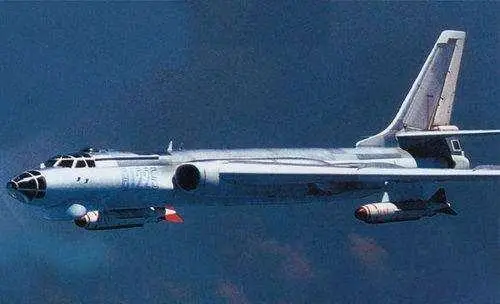
To compensate for the increased mass and increased drag, the defensive artillery installation was preserved only in the rear part.
The YJ-6 anti-ship missile, created on the basis of the Soviet P-15 missile, had a jet engine running on TG-02 liquid fuel (Tonka-250) and an AK-20K oxidizer (based on nitrogen oxides).
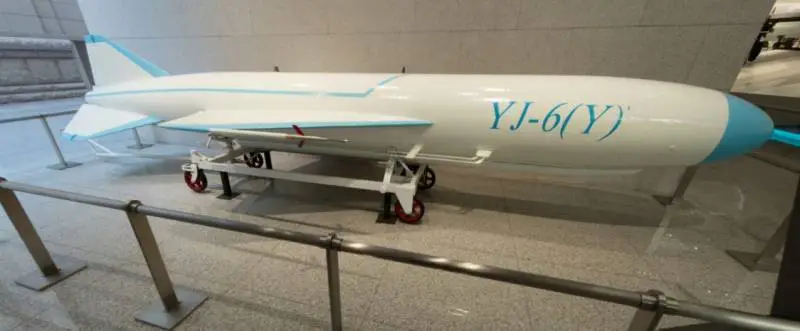
The curb weight of the missile carrying a 500 kg armor-piercing high-explosive warhead was 2 kg. Targeting was carried out by an active radar seeker. The maximum flight speed at an altitude of 440 m is up to 500 km/h. The flight to the target at the final stage could be programmed at altitudes of 1, 080 or 500 m. The firing range initially did not exceed 100 km.
In the late 1980s, modernization was carried out, and the YJ-6K missile with a new guidance system in a simple jamming environment had a 90% hit probability. The firing range at a destroyer-type target has increased to 110 km. Later modifications of the YJ-6K were equipped with built-in active radar jamming equipment.
The next cruise missile in this family, which appeared a little later, was designated YJ-61. Thanks to the increase in the volume of fuel tanks and the use of a more powerful ARL seeker, it was possible to fire at large targets at a distance of up to 200 km. However, to achieve such a launch range, the carrier aircraft had to fly at high altitude, which made it easier to detect and intercept, and the capabilities of the Type 245 search radar were at the limit.
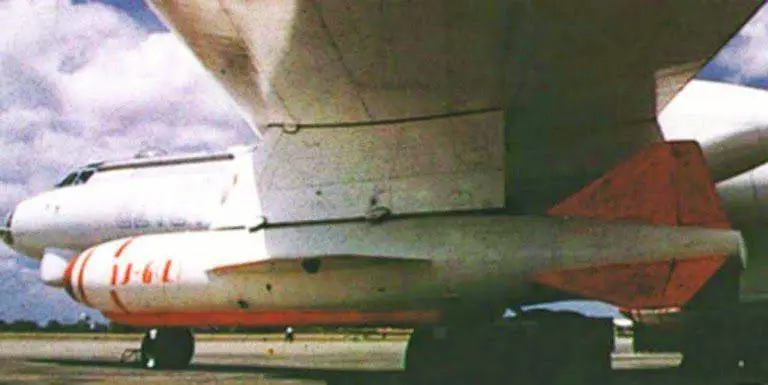
YJ-61 missile under the wing of an N-6D
The N-6D missile carriers, armed with YJ-6K and YJ-61 anti-ship missiles, have long remained the main striking force of Chinese long-range naval aviation. But due to the obsolescence of the avionics and weapons of the N-6D aircraft, in 1999 the production of the improved N-6N missile carrier with a new on-board radar system and YJ-63 anti-ship missiles began. After the start of mass deliveries of N-6N aircraft, some of the N-6Ds were converted into tankers.
The YJ-63 air-to-surface cruise missile is equipped with a turbojet engine and is capable of hitting both ground and surface targets with high accuracy. Externally, it retained many of the features of previous anti-ship missile models created on the basis of the Soviet P-15, and partially borrowed their on-board equipment.
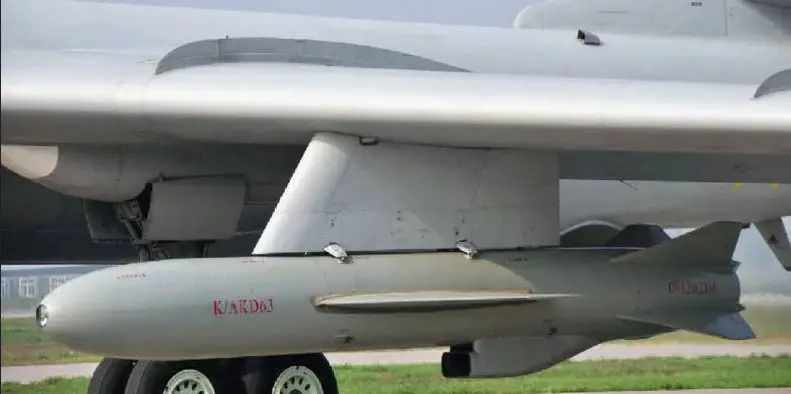
YJ-63 missile under the wing of an N-6N aircraft
The YJ-63's firing range is approximately 200 km. At the initial stage of the flight, the rocket is controlled by an inertial system, at the middle stage correction occurs using satellite navigation, and at the final stage a television guidance system is used. There is also a version of the missile with an active radar seeker. Western sources claim that the YJ-63 can carry a nuclear warhead with a yield of 20–90 kt.
In 2005, the operational squadrons of the PLA Navy received H-6G missile carriers, equipped with new electronic warfare equipment and capable, in addition to YJ-63 missiles, of carrying new YJ-83K anti-ship missiles with a turbojet engine. About 10 years later, the YJ-12 supersonic missile was introduced into the armament of these aircraft.
The YJ-83K anti-ship missile has a launch weight of about 800 kg and a launch range of up to 250 km. The weight of the missile warhead is 185 kg.
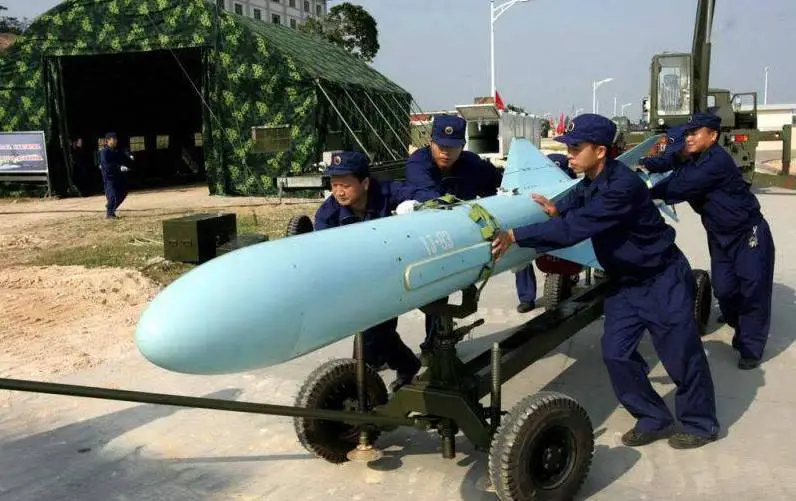
Chinese sources write that the YJ-83K uses a noise-resistant radar seeker with a wide scanning field, which is designed to increase resistance to active and passive interference and increase the likelihood of hitting the target. During the cruising phase, satellite navigation is used along with the inertial system, and the flight altitude is controlled by a laser altimeter.
Externally, the first Chinese air-launched supersonic anti-ship missile, the YJ-12, resembles an enlarged Russian aircraft missile, the X-31.
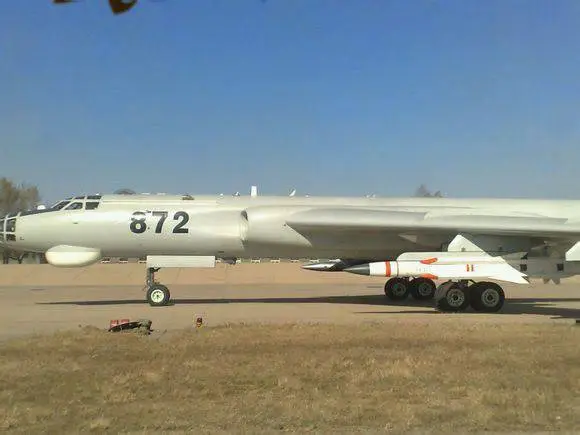
The YJ-12 is approximately 7 meters long, 600 mm in diameter, and weighs 2 kg. There is no information about the YJ-500's guidance system, but most likely it uses an active radar seeker. According to unconfirmed reports, the YJ-12 anti-ship missile, equipped with a 12-kg warhead, is capable of hitting surface targets at a range of up to 300 km. Maximum flight speed is about 300 km/h.
The H-6K missile carrier, which appeared in 2007, differed from previous modifications in appearance by a different cabin, with an opaque front part. The radically modernized aircraft received new electronic equipment and avionics copied from Western models, including a “glass cockpit.” In the place where the navigator used to be located, in the bow of the cabin, a powerful radar is installed. The most significant innovation was the use of the Russian D-30KP-2 turbofan engine, and later its improved Chinese clone WS-18. The crew was reduced to 4 people.
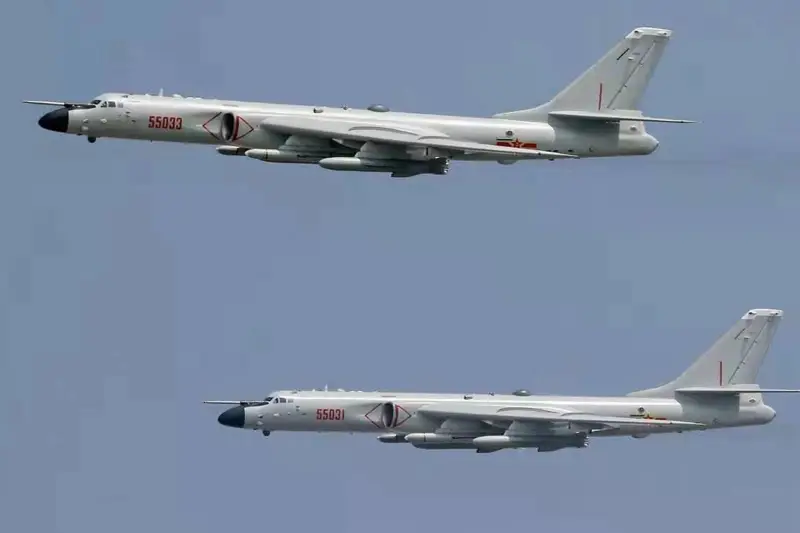
This modification became purely missile-carrying; a non-removable fuel tank was installed in place of the bomb bay, which, in combination with more economical engines, provided a combat radius of up to 3 km without refueling in the air; with refueling, the flight range increases by about another 500 km. Maximum speed – 2 km/h. Cruising - 500 km/h. Under each wing there are three nodes for suspension of cruise missiles. An electronic warfare station is located at the site of the defensive rear firing point.
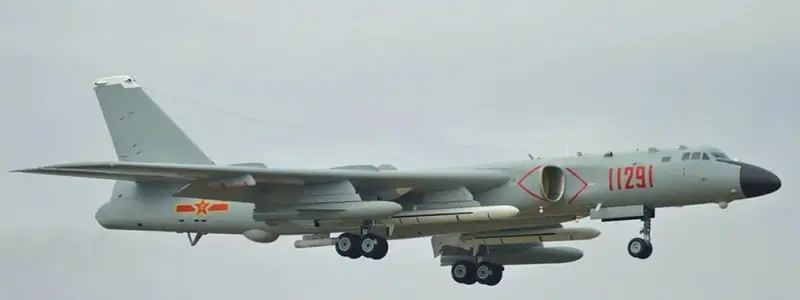
Based on the H-6K, the H-6J naval missile carrier was created, equipped with a powerful radar for scanning the water surface and an electronic reconnaissance station adapted for detecting ship radars.
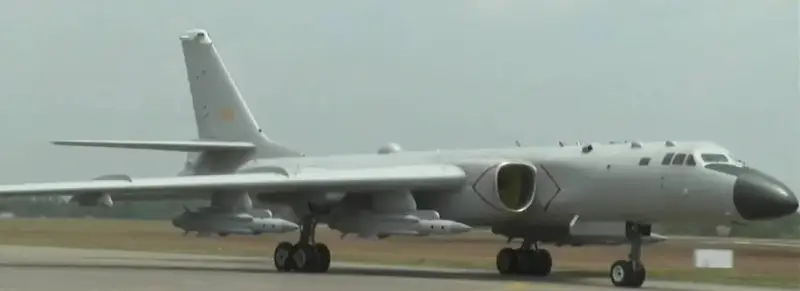
A few years ago, Chinese television showed the H-6J naval missile carrier, armed with four YJ-12 supersonic anti-ship missiles. The PLA Navy also has several HD-6 electronic warfare aircraft, which are similar in airframe and engines to the H-6K, but do not carry missile weapons.
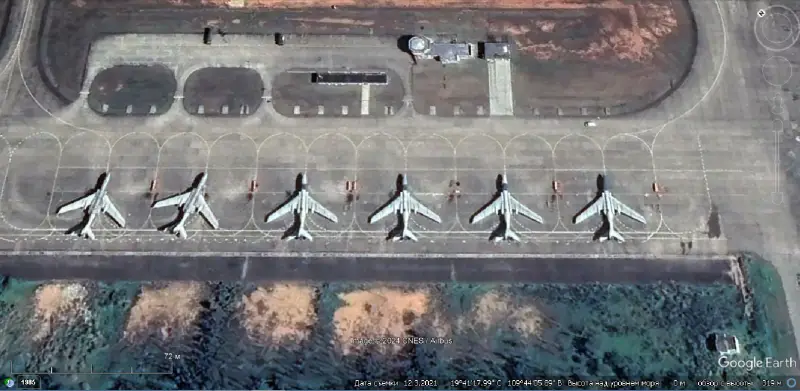
Google Earth satellite image: N-6 aircraft at the Yalanshi PLA Naval Air Base on Hainan Island
According to reference data, as of 2021, the PLA Navy had up to 40 aircraft of the H-6 family. This number includes electronic warfare aircraft, tankers and H-6G/J missile carriers.
JH-7 supersonic missile-carrying bombers
For more than 50 years, the main Chinese front-line bomber was the H-5, which was also used in naval aviation as a carrier of mines and torpedoes. Although the subsonic N-5, which appeared simultaneously with the MiG-15 fighter, was outdated by the early 1970s, there was nothing to replace it in the PRC at that time. The cessation of military-technical cooperation with the USSR and the general degradation of knowledge-intensive and high-tech industries of Chinese industry did not allow the creation of a modern attack aircraft.
The matter moved from a dead point in the early 1980s, when, against the backdrop of anti-Sovietism, China established allied relations with the United States, and the Chinese aircraft industry gained access to advanced Western technologies.
The appearance of the new Chinese attack aircraft JH-7 Flying Leopard, produced at the Xi'an aircraft plant, was greatly influenced by the American multi-role heavy fighter McDonnell Douglas F-4 Phantom II. Moreover, the avionics of the supersonic JH-7 bomber included analogues of the electronic systems of American combat aircraft captured in Vietnam. The first series of Flying Leopards were equipped with Chinese licensed versions of the Rolls-Royce Spey Mk. 202, which was originally intended to equip the carrier-based Phantoms of the Royal Navy.
The JH-7 bomber, which is actually a functional analogue of the Soviet Su-24, became the first Chinese strike aircraft designed from scratch. At the same time, its design contained many components, elements and systems created on the basis of Western models.
The JH-7 first flew in 1988. Serial “Flying Leopards” entered combat squadrons of the PLA Air Force in the mid-1990s. Although the aircraft designation contains an abbreviation that stands for Jiān Hōng - fighter bomber - this is a machine designed exclusively for striking ground and surface targets, in many respects close in this regard to the F-4 Phantom II aircraft.
The first modification of the JH-7 bomber had a maximum take-off weight of 27 kg, which is comparable to the maximum weight of the Phantom (500 kg). Due to its purely strike specificity, the two-seat “Flying Leopard” was significantly inferior in maximum speed to the British F-23M Phantom FGR. Mk 764, which could be used as an interceptor and accelerated to 4 km/h at high altitude, while the speed of the JH-2 was limited to 2 km/h.
At low altitude, the F-4M also had an advantage over the JH-7 (1 km/h versus 450 km/h). The flight range of both vehicles was approximately equal (without PTB - 1-200 km, ferry with PTB - 2-300 km). In terms of combat load, the Flying Leopard was slightly superior to the British Phantom (2 kg versus 600 kg).
Although the process of mastering the JH-7 attack aircraft in combat units was very difficult and was accompanied by flight accidents, this aircraft became in many ways a milestone for Chinese combat aviation and raised it to a new level of development.
In particular, it was the JH-7 bombers that were first adapted to the new relatively compact solid-fuel anti-ship missile YJ-8, which was strikingly different from the previous, more airplane-like, bulky Chinese anti-ship missiles created on the basis of the P-15.
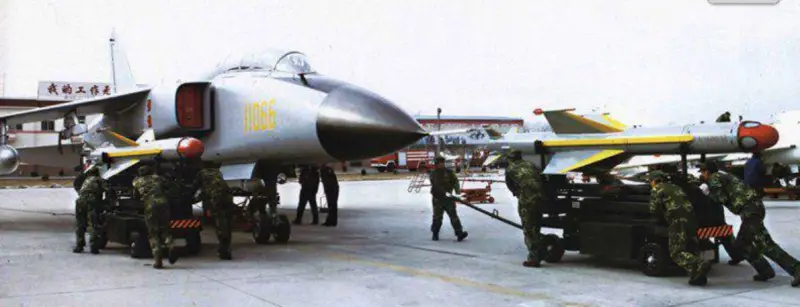
YJ-8K anti-ship missile suspension for JH-7 bomber
Experts believe that the creation of the YJ-8 missile, which entered service in the mid-1980s, became possible after Chinese specialists gained access to the French Exocet anti-ship missile system and became familiar with the solid fuel recipe.
The YJ-8 anti-ship missile system is made according to a normal aerodynamic design with a folding cross-shaped delta wing of low aspect ratio (in the middle part) and control planes (located in the rear part of the rocket). The body has a cylindrical shape with an ogival bow.
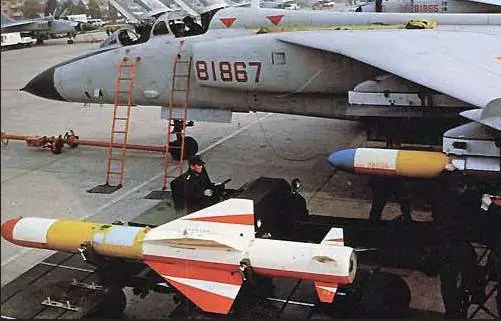
The YJ-8K anti-ship missile, intended for use from aircraft, weighed 610 kg. The mass of the armor-piercing high-explosive warhead is 165 kg. Length – 5,814 m. Body diameter – 0,36 m. Wing span – 1,18 m. Flight speed – about 300 m/s. The flight altitude on the marching section is 50 m. During the attack on the target, it decreases to 5–7 m. The firing range when launched from an altitude of 8 m reached 500 km. During the march, an inertial control system was used; at the final stage of the flight, an active radar homing head was turned on.
The JH-7 aircraft, built in quantities of at least 50 units, were actually in trial operation. In 2004, an improved modification of the JH-7A Flying Leopard II, armed with longer-range anti-ship missiles, entered service.
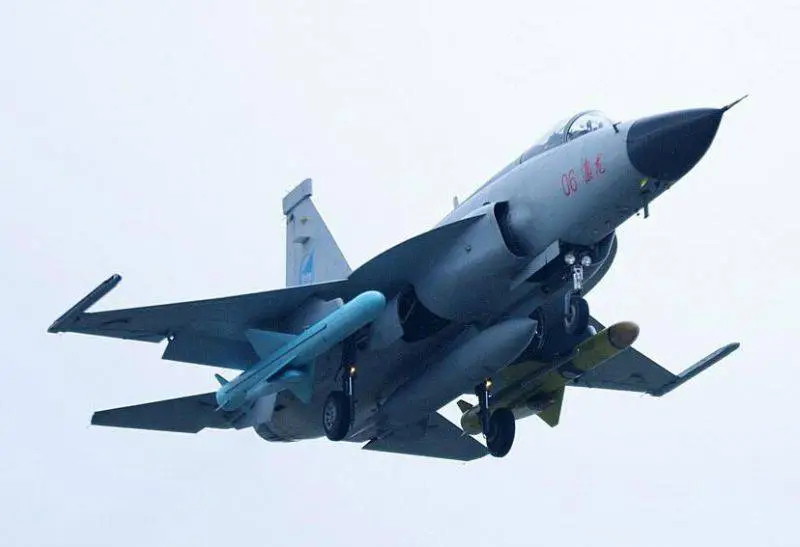
The modernized JH-7A received new, much more powerful and reliable engines, a Chinese-developed radar, a satellite navigation system, and suspended containers with electronic warfare, radar and target designation equipment. The range of weapons has been expanded, the number of hardpoints has been increased to 11. The combat load has been increased to 8 kg.
Due to the fact that the solid-fuel jet engine did not provide the required firing range, the YJ-8 and YJ-82 missiles, equipped with compact turbojet engines, were created on the basis of the YJ-83.
The YJ-82A air-launched anti-ship missile has a range of up to 180 km. The launch weight of the rocket is about 700 kg. Speed – about 900 km/h. The flight altitude during the marching phase is 20–30 m; before attacking the target, the missile drops to a height of 5–7 meters and performs an anti-aircraft maneuver. The armor-piercing high-explosive warhead weighs 165 kg. Its detonation after penetrating the hull can cause heavy damage to a destroyer-class ship.
The YJ-83K missile, which is also part of the armament of the N-6G/J long-range missile carriers, is an improved version of the YJ-82A. The YJ-83K anti-ship missile system uses a modern element base, thanks to which it was possible to reduce the volume occupied by electronic units by 25%. This made it possible to increase the mass of the warhead and the capacity of the fuel tank.
In addition to the YJ-82 and YJ-83 anti-ship missiles, the JH-7A’s armament includes YJ-701 (S-701) and YJ-704 (S-704) air-to-surface missiles, suitable for hitting boats and small-displacement vessels.
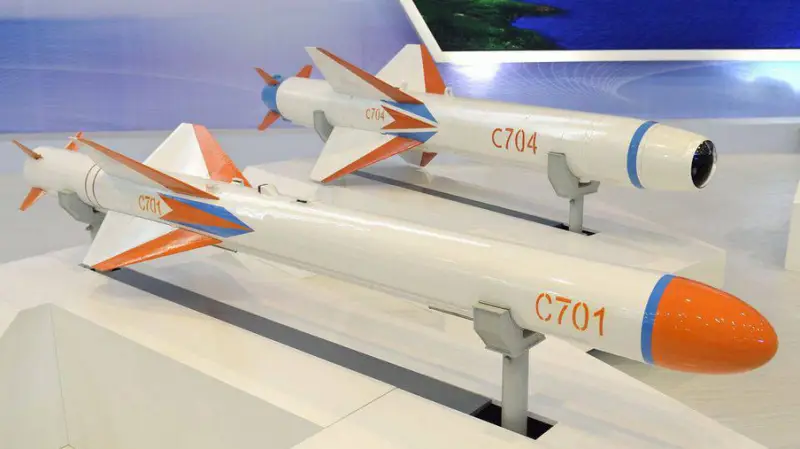
With a launch weight of 117–160 kg, these missiles carry warheads weighing 29–48 kg and have television or radar guidance. Firing range – up to 35 km.
The latest modification of the Flying Leopard is the JH-7AII. This aircraft is equipped with a new radar with an increased detection range of surface targets, as well as more advanced electronic warfare equipment and is armed with YJ-91 supersonic anti-ship missiles.
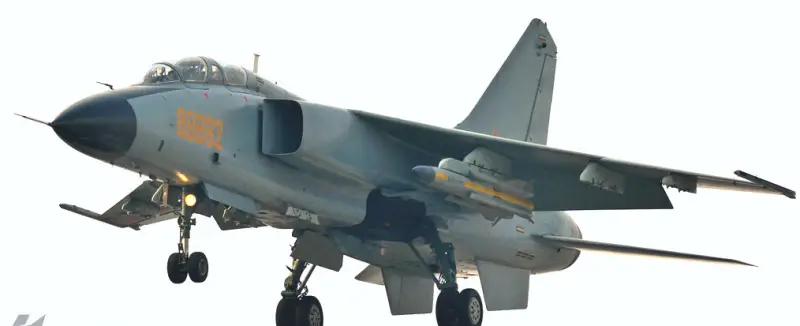
Chinese authors write that the source of inspiration for the creation of the YJ-91 anti-ship missile for Chinese designers was the Soviet X-31 missile.
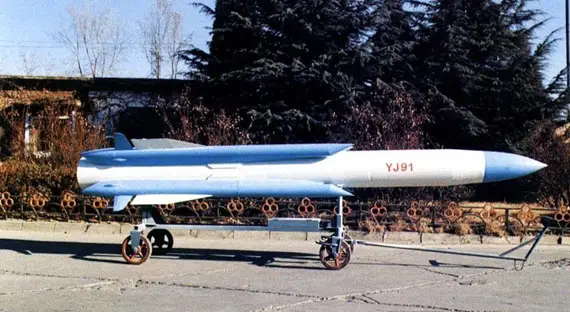
The YJ-91 missile has a mass of about 600 kg. Length – 4,7 m. Diameter – 0,36 m. Speed – 3,5 M. Range – up to 150 km. The warhead weighs 165 kg.
By 2019, about 270 JH-7, JH-7A and JH-7AII aircraft had been built. All bombers of the first modification have already been written off.
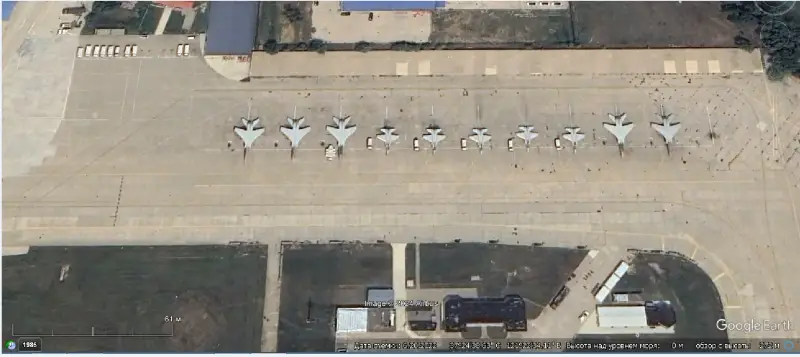
Google Earth satellite image: JH-7A strike aircraft of the 14th Bomber Training Regiment in the same formation with L-15 combat training aircraft at Laishan Air Base
The JH-7A and JH-7AII aircraft were in service with five naval aviation regiments assigned to the fleets of the Eastern, Southern and Northern theater of operations. Some aviation units were of a mixed composition and operated J-11 fighters in parallel with missile-carrying bombers. The 14th Bombardment Training Regiment had JH-7A and L-15 jet combat trainers.
According to reference data, the PLA Navy operated 2020 JH-120A/AII missile-carrying bombers in 7.
Продолжение следует ...
Information